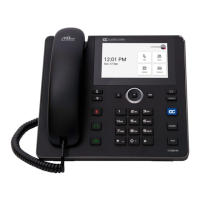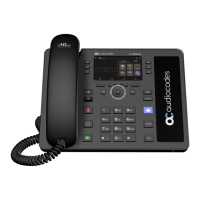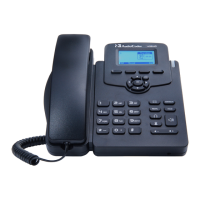Administrator's Manual E. Deploying AudioCodes IP Phones - Use Case
Version 3.4.3 227 400HD Series IP Phones
E Deploying AudioCodes IP Phones - Use
Case
In a typical scenario, the ISP/integrator:
1. Connects an out-of-the-box phone to the LAN and power supply and manually
configures Static IP address on the phone.
2. Prepares configuration files for the enterprise customer.
3. Places the configuration files on the enterprise customer's HTTP server and configures
DHCP Server Option 160 to point to the location.
E.1 Preparing Configuration (cfg) Files for the Enterprise
Customer
The network administrator can prepare configuration files for the enterprise.
To prepare configuration files for the enterprise customer:
1. Save the phone's default configuration to file (see the next section E.2 below)
2. Prepare a global.cfg configuration file (see Section E.1.2)
3. Generate private.cfg configuration files (see Section E.1.3)
E.1.1 Saving the Phone's Default Configuration to File
An out-of-the box phone's default (factory) configuration can be saved to file. This will be the
baseline on which to prepare a global.cfg configuration file afterwards.
To save a phone's default configuration to a file:
1. Open a Web browser and connect to the phone's Web interface using
http://<phone's IP address>
2. In the Web interface home page (System Information), make sure the phone is
running the latest firmware version. If not, obtain a new firmware file from
AudioCodes and load it to the phone using the Web interface's Firmware Upgrade
page (Management tab > Manual Update > Firmware Upgrade).
3. In the Web interface's Restore Defaults page, restore the default configuration
(Management > Administration > Restore Defaults) in case the default
configuration was modified.
4. In the Web interface's Configuration File page, save the default configuration to a
file (Management > Manual Update > Configuration File).

